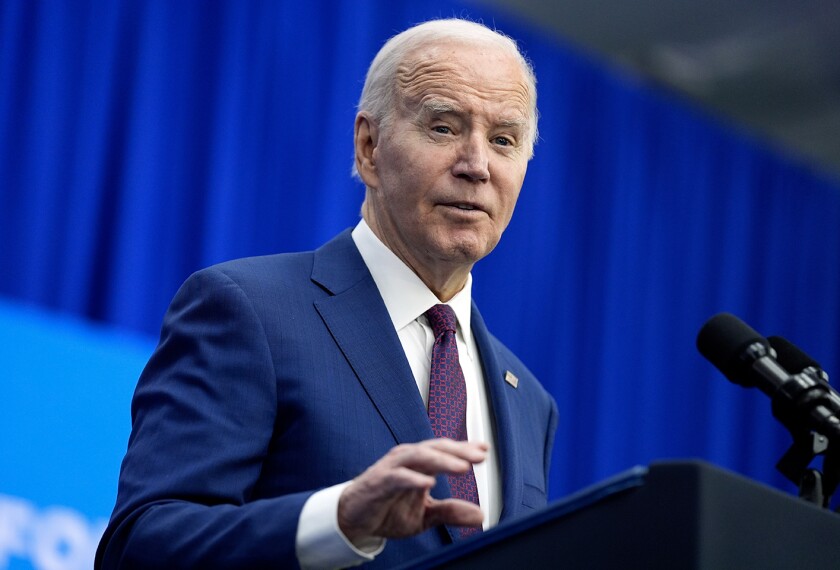High schools feel orphaned by federal lawmakers who promised to leave no children behind, advocacy groups for principals and students asserted at a press conference here last week.
“Left Out and Left Behind: NCLB and the American High School” is available from the Alliance for Excellent Education. (Requires Adobe’s Acrobat Reader.)
Those schools are expected to be accountable to Washington under the “No Child Left Behind” Act of 2001 and must implement significant changes, yet they receive a far smaller share of federal funding for the job than do elementary schools, said Susan Frost, the executive director of the Alliance for Excellent Education. The national group, based here, works in behalf of disadvantaged secondary students.
Such unfairness must be rectified quickly, Ms. Frost said, as the future of high school youths is being jeopardized.
“The sad fact is that many of these children ... will end up in state prison, where we will finally be forced to spend the money it would take to educate them,” she argued.
The alliance paired with the Reston, Va.-based National Association of Secondary School Principals last week to release a report that aims to document what the groups see as the harsh realities of the federal law, a reauthorization of the Elementary and Secondary Education Act, at the secondary level.
“The current level of overall federal funding ... is $6 billion short of the amount that was authorized and agreed to when the bill was signed into law,” the report, “Left Out and Left Behind: NCLB and the American High School,” says. “For high schools, there is little or no federal support for students at this age level.”
But other observers contend that high schools aren’t making the most of the money they do have. “This is part of a never- ending symphony that has as its major tune, ‘More [money],’” James W. Guthrie, the director of the Peabody Center for Education Policy at Vanderbilt University in Nashville, Tenn., said of the report.
No Fair Share?
While the No Child Left Behind law focuses on ensuring that elementary schools are up to par, the law also sets out requirements for the nation’s high schools, the report notes. The law requires all public schools to employ only “highly qualified” teachers in the core content areas by the end of the 2005-06 school year. The legislation also will require all high schools to make “adequate yearly progress” on state and district report cards.
Achieving such goals takes cash—cash that the federal government is not offering in many instances, Ms. Frost said. Moreover, high schools receive little of what money is provided. Relatively few high schools, for instance, get Title I money for disadvantaged students.
Only 5 percent of the $11.68 billion that went to districts serving low-performing students in fiscal 2003 was earmarked for high schools, the report found. In addition, it says, high schools receive only 9 percent of the $1 billion earmarked in this year’s budget for after-school and summer school programs for students deemed at risk for academic failure.
The responsibility, then, falls to already strapped states and districts, say the alliance and the NASSP, who want more money.
The District of Columbia school system is running a $63 million deficit, out of a total budget of $740 million, and circumstances are so dire that the purchase of necessities such as toilet paper has been frozen, said Patricia Tucker, the principal of the 390-student Benjamin Banneker Academic High School here. Moreover, no money is available for recruiting teachers or helping those already employed develop their skills, said Ms. Tucker, who spoke at the press conference.
The most recent estimate of the deficit is $40 million.
Creative Alternatives
While it is true that high schools receive significantly fewer federal resources than do elementary schools, they need to be more creative in stretching the money they do have, said Mr. Guthrie of Vanderbilt. They could consider stratifying pay for teachers or do away with the senior year altogether, as it is considered by many to be inconsequential, he suggested.
Some federal lawmakers are more sympathetic. “They’ve hit on an issue that needs addressing,” said an aide to Rep. George Miller of California, the ranking Democrat on the House education committee and a key player in the passage of the law.




